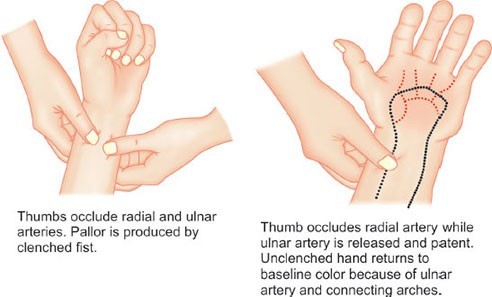The school nurse is called to the soccer field because a child has a nose bleed (epistaxis). In which position should the nurse place the child?
Side-lying with the head slightly elevated.
Standing with the head leaning backward.
Sitting up and leaning forward.
Supine with the legs raised.
The Correct Answer is C
A) Incorrect- This position is not ideal for managing a nosebleed because it does not promote drainage and may lead to blood flowing down the throat.
B) Incorrect- Leaning the head backward can cause blood to flow down the throat and may lead to choking or aspiration.
C) Correct- Placing the child in a sitting position and leaning forward helps prevent blood from flowing down the back of the throat, which can lead to choking or aspiration. Leaning forward allows the blood to drain out through the nostrils.
D) Incorrect- Placing the child in a supine position with raised legs is not recommended for managing a nosebleed, as it may lead to blood flowing down the throat.
Nursing Test Bank
Naxlex Comprehensive Predictor Exams
Related Questions
Correct Answer is B
Explanation
A) Incorrect - While discussing the potential for asymptomatic partners is important, addressing the client's concerns and providing accurate information is more immediate.
B) Correct- Syphilis and other STIs are important public health concerns. The nurse should provide accurate information, answer questions, and correct any misconceptions the client might have. This approach supports the client's knowledge and understanding of their health condition and prevents the spread of misinformation.
C) Incorrect - While discussing contraceptives is relevant to sexual health education, it may not directly address the client's concerns about their prior infections.
D) Incorrect - Notifying local health departments is important for reporting communicable diseases, but it doesn't directly address the client's current situation and concerns.
Correct Answer is A
Explanation
Allen's test is a procedure used to assess the patency of the ulnar artery and the collateral circulation of the hand. It is performed to determine the adequacy of collateral circulation before obtaining arterial blood gases from the radial artery. The test helps ensure that the ulnar artery is functioning properly and can supply blood to the hand if the radial artery is used for blood sampling or other invasive procedures.
The test involves occluding both the ulnar and radial arteries while the patient clenches their fist. The nurse then releases pressure on the ulnar artery while maintaining occlusion of the radial artery. The hand should quickly regain normal coloration, indicating adequate collateral circulation.
It's important to note that the Allen's test is specific to the assessment of collateral circulation in the hand and is not used for other purposes such as assessing deep vein thrombosis, cardiac output calculation, or obtaining pulmonary artery pressures.

Whether you are a student looking to ace your exams or a practicing nurse seeking to enhance your expertise , our nursing education contents will empower you with the confidence and competence to make a difference in the lives of patients and become a respected leader in the healthcare field.
Visit Naxlex, invest in your future and unlock endless possibilities with our unparalleled nursing education contents today
Report Wrong Answer on the Current Question
Do you disagree with the answer? If yes, what is your expected answer? Explain.
Kindly be descriptive with the issue you are facing.
